A Breakdown of Men’s Fashion from 1550-1600
Western European fashion experienced quite a change from 1550-1600. The Renaissance brought in a wave of art and culture that swept over Europe and is visible in the fashion of both men and women. Our clearest and most useful tool into seeing into the fashion of the past is through art. More specifically, portraits showcase the opulent styles favored by society’s elite.
Portraits were usually painted for prominent figures and on special occasions. For this reason, they may not depict “every day” fashion worn by most people. Which makes complete sense because if you are getting your portrait painted by an artist you probably want to wear your snazziest outfit! With this detail in mind, we can still study these beautifully intricate designs with an appreciative eye.
Western European fashion in the period of 1550-1600 is overall characterized by an increase in opulence. The rise of the ruff, a stiff ruffled neck piece, occurred during this time. The inexplicable codpiece fell out of style for men at this time, perhaps the best trend to be dropped in history.
We usually focus on dresses and gowns from the Renaissance period, so I thought we would shift our focus towards men this week. Although the attire worn by men may seem simple compared to a beaded and embroidered gown, a lot of attention to detail went into the mens’ clothing.
Let’s take a closer look at what was fashionable for men during this period!
- A linen shirt with a ruff and matching wrist ruffs was the typical choice, until replaced by a collar and matching cuffs later.
- A doublet with long sleeves. This is a jacket that is fitted and shaped to snugly fit a man’s body.
- A tight-fitting jerkin was sometimes worn over the doublet. These were usually sleeveless and made of leather.
- Hose made of wool to cover the legs. A variety of hose styles were worn during this period.
- Trunk or round hose were short and padded. Especially short hose were worn over cannions, which were fitted hose that ended just above the knee. Trunk hose could be paned or pansied by sewing strips of fabric “panes” over a lining.
- Slops or galligaskins were loose hose that extended just below the knee and could also be pansied.
- Pluderhosen are the Northern European version of pansied slops that had a very full inner layer that stuck out loosely between the paning.
- Venetians are a style of semi-fitted hose that reach just below the knee.
- Stocking or netherstocks were often worn to cover the legs.
- Shoes were flat with rounded toes. They were fastened by slashes until ties over the instep were adopted.
For outerwear, short cloaks or capes were popular at the time. These were usually hip-length with sleeves. In colder weather, longer coats were sported. Military jackets, such as mandilions, were also fashionable. Gowns grew out of style and were considered old-fashioned by this point.
Hair was cut short and brushed back from the forehead. In the 1580s, longer styles became popular. Later, in the 1590s, the more fashionable young men wore a lovelock, a long section of hair hanging over one shoulder.
The styles of headgear worn during this period changed often. Through the 1570s, a soft fabric hat with a gathered crown was worn. A capotain or copotain, a conical felt hat with a rounded crown was the style in later years. These hats grew taller over the years and were decorated with a jewel or feather. Headgear was worn both indoors and outside.
Coifs or biggins were the close-fitting caps covering the ears and tied under ears. Children and older men wore these under theirs hats or alone when indoors. Coifs tended to be black in color.
Nightcaps, worn indoors, were conical shaped and made of linen that was embroidered.
Portraits help us to better understand what fashions were popular during this period. They also capture the amount of detail found in men’s clothing.
Here is a style gallery of popular styles for men:
Prospero Alessandri is dressed in a severe black jerkin with shorted bases over a light grey doublet with rows of parallel cuts between bands of gold braid. His rose-coloured pansied slops are decorated with cuts and thin applied gold trim.
The future Henry III of France is shown wearing a doublet and matching cape. He accompanies this with the high collar and figure-of-eight ruff of c. 1573–74.
An Italian tailor in a pinked doublet over a heavily padded hose. The shirt he is wearing features a small ruff.
The cartwheel ruff popular in England in the 1580s is worn around Sir Henry Unton’s neck. A white satin doublet laced with a red-and-white cord at the neck is also shown. He fashionably drapes his a red cloak with gold trim over one shoulder. His tall black hat with a feather shows a popular style of this period.
*Mens’ fashion was anything but boring! What do you think about these past styles? Leave us your comments and thoughts on our blog or Facebook page!





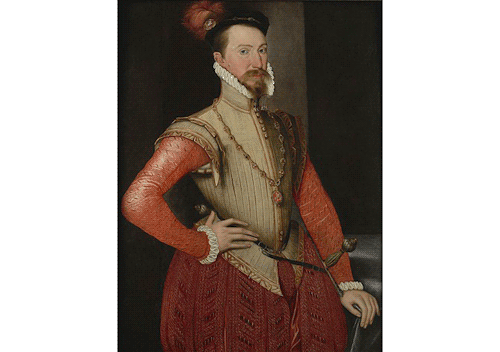
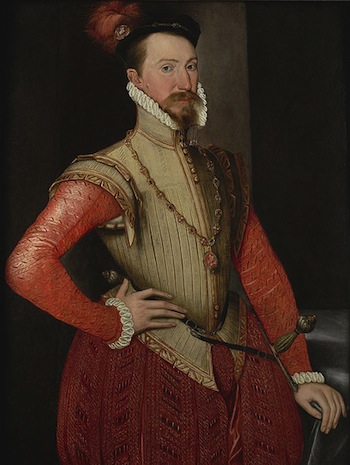
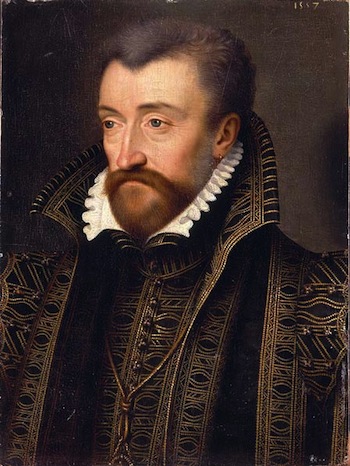
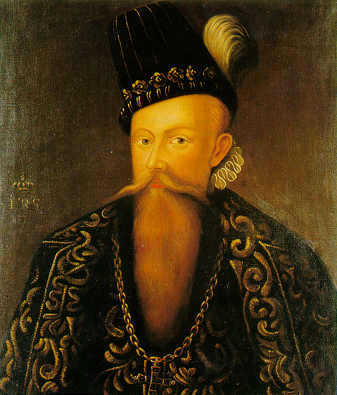
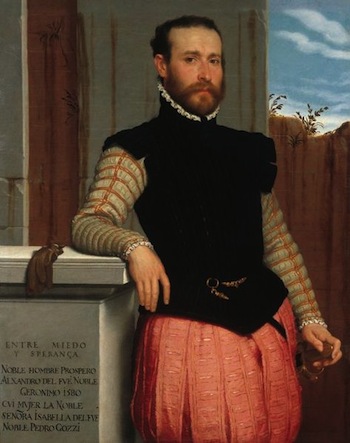
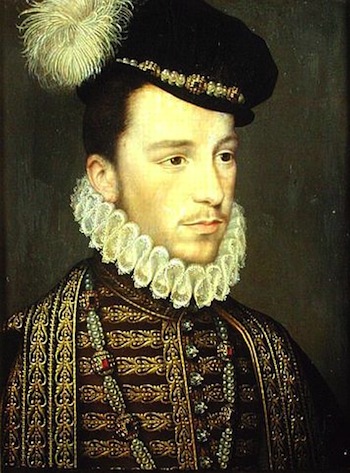
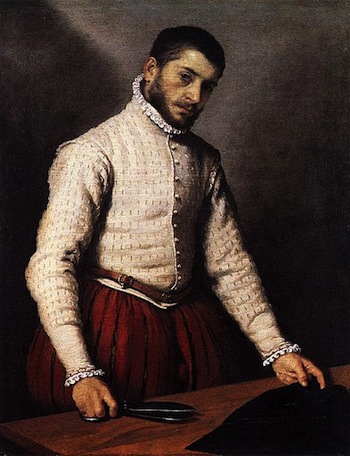
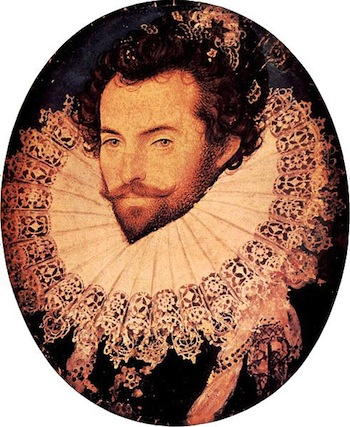
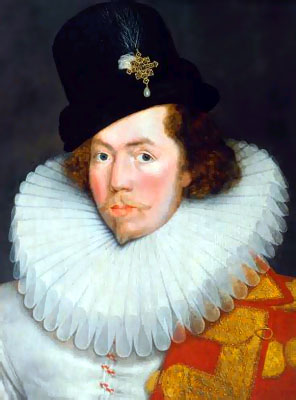



















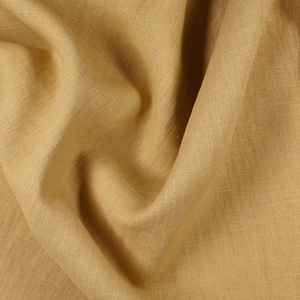

















4 Comments
Lady AElflaed
Here’s a big list if you’re in America..
http://www.renfaire.com/Sites/index.html
Becky
I have found this very interest information.. I have tired to pull up Renaissance fairs and can’t seem to find any . They where very popular several years ago . Can anyone lead me in their directions. Thank you for all the above information
Rogues of Thread
Oops, I miss-posted my own blog address in the name link on my original comment! Please see either the name link in this comment or the specific post link.
Rogues of Thread
You’re right, men’s clothes were certainly not boring! For the upper class and nobility they could be as complex and heavily embroidered and adorned as any woman’s. Men even wore corsets, though modern men are fall less interested in attaining the correct period shape by wearing a corset than women.
I used elements of the above portraits of Robert Dudley, Prospero Alessandri, and Giovanni Battista’s portrait of an Italian tailor in my designs for the Central Coast Renaissance Faire’s Lord Mayor and Sheriff. Particularly, I looked at the slashing, doublet yoke, pleating, skirting shape and the way the epaulets were attached. The two men’s characters are from the middle class and so have far less adornment, mostly consisting of some embroidery. Images can be seen here: https://bythebodkin.wordpress.com/2011/07/22/peacocks/
Fabric-store.com’s linen is an excellent choice for a Renaissance middle class costume and the quality is wonderful to work with.